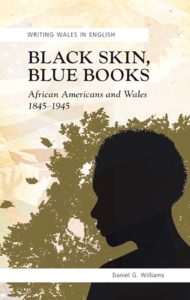Dathlu Mis Hanes Pobl Ddu | Celebrating Black History Month


Interest in race and ethnicity research in Wales has grown apace in the last decade, opening up wider debates about the nature, focus and content of what collectively is called Welsh Studies. Across a range of disciplines, we are witnessing not only a ‘global turn’ placing Wales more substantively within a plethora of global interconnections, but also a ‘decolonial turn’ that involves the questioning of disciplinary traditions and knowledge production, and highlighting the colonial legacy that shapes academic pursuits. In the present text, we explore the development of Welsh Studies through the lens of race/ethnicity. Contributors from history, heritage studies, literature, film, policy, social and cultural studies offer case analyses adopting new perspectives, theoretical routes and methodological innovations, with the aim of illustrating aspects of the decolonising of knowledge production.
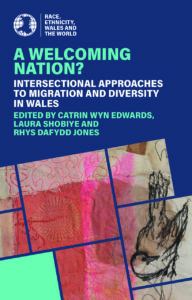
This volume addresses current debates around migration in, from and through Wales. It includes a range of migratory perspectives to better understand the diverse lived experiences of migrants, and the policies, measures and approaches at work across various scales and sectors in Wales that shape their everyday lives.
A Welcoming Nation? adopts an intersectional approach to explore these experiences, which is central to understanding the multiple and complex ways in which exclusion and marginalisation take place. The volume is not only a book about migration, therefore, but also about the ways in which migratory experiences and status can intersect with other factors – such as age, gender, race and sexuality – providing original analyses of migration in Wales.

Dyma gyfrol sydd yn ymdrin â mewnfudo rhyngwladol, cymunedau Cymru a’r Gymraeg o safbwynt ieithyddol a chymdeithasol. Gan dynnu ar ymchwil empeiraidd gyda myfyrwyr, tiwtoriaid iaith a swyddogion llywodraethol Cymru, mae’r awdur yn herio rhagdybiaethau damcaniaethol am berthynas mewnfudwyr â’r Gymraeg. Daw cymhlethdod sefyllfa iswladwriaethol Cymru i’r amlwg wrth I Lywodraeth Cymru ddatgan cefnogaeth dros ddwyieithrwydd, tra bod polisïau’r Wladwriaeth Brydeinig yn hybu polisi mewnfudo a dinasyddiaeth homogenaidd ac unieithog. Wedi trafod y sefyllfa yn Québec ac archwilio’r berthynas rhwng hunaniaethau ethnig a sifig, awgryma Gwennan Higham ei bod yn ddyletswydd arnom i ddiffinio a sefydlu dinasyddiaeth amlethnig Gymreig a Chymraeg.
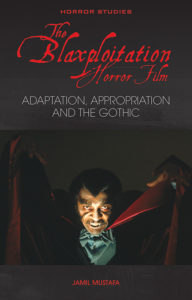
This book is a pioneering study of Blaxploitation horror films, connecting them with both mainstream horror movies and classic Gothic texts. The author argues that conventional horror films adapt, while Blaxploitation horror films appropriate, the archetypes of Gothic fiction – and rather than exploit, it is argued that they function to satisfy Black audiences. Of the few scholars who have given consideration to Blaxploitation horror films, only occasional chapters have been devoted by them in monographs focused on either Blaxploitation films or horror films. In marked contrast, the present study gives a book-length consideration to Blaxploitation horror films per se, demonstrating how they engage both Gothic fiction and film, and issues of vital significance to American society and culture in the 1970s. In this important and innovative study, chapters explore the sociocultural significance of the vampire, Frankenstein’s monster, Jekyll/Hyde and the werewolf, the zombie and the demon.
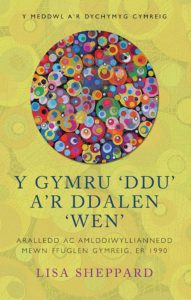
Dyma’r gyfrol Gymraeg gyntaf i drafod y portread o amlddiwylliannedd yng Nghymru mewn ffuglen Gymraeg a Saesneg gyfoes. Mae’n astudiaeth gymharol sy’n dod â gwaith rhai o awduron Cymraeg a Saesneg mwyaf blaenllaw Cymru yn y degawdau diwethaf ynghyd – gan gynnwys Angharad Price, Llwyd Owen, Tony Bianchi, Charlotte Williams a Dannie Abse. Mae’n ein cyflwyno hefyd i waith awduron nad ydynt wedi derbyn llawer o sylw beirniadol hyd yn hyn, awduron megis Nikita Lalwani a Joe Dunthorne. Er mwyn ystyried y portread o amlddiwylliannedd, rhoddir ar waith ddamcaniaethau am ‘aralledd’ – term sy’n dynodi gwahaniaeth a ystyrir yn israddol i’r brif ffrwd gymdeithasol neu ddiwylliannol. Trwy archwilio ffurf y nofel Gymreig gyfoes, ynghyd â themâu megis ystrydebau, amlieithrwydd, a mudo a mewnfudo, awgryma’r gyfrol hon sut y gall darllen ffuglen ar draws ffiniau ieithyddol Cymru gyfrannu at ddatblygu cymdeithas Gymreig fwy cynhwysol – cymdeithas lle y mae’r Gymraeg yn ganolog i fywyd y genedl, ond lle yr ymwrthodir â seilio hunaniaeth Gymreig ar allu’r unigolyn yn yr iaith honno; a chymdeithas lle y mae’r dwyieithrwydd sylfaenol hwn yn herio cysyniadau am oruchafiaeth, ac angenrheidrwydd, un brif ffrwd ddiwylliannol.

The population of Wales is the product of successive waves of immigration. During the industrial revolution many diverse groups were attracted into Wales by the economic opportunities it offered – notably Irish people, black and minority ethnic sailors from many parts of the world, and people from continental Europe. More recently, there has been immigration from the New Commonwealth as well as refugees from wars and oppression in several parts of the world. This volume engages with this experience by offering perspectives from historians, sociologists, cultural analysts and social policy experts. It provides analyses of the changing patterns of immigration and their reception including hostile and violent acts. It also considers the way in which Welsh attitudes to minorities have been shaped in the past through the activity of missionaries in the British Empire, and how these have permeated literary perceptions of Wales.
In the contemporary world, this diverse population has implications for social policy which are explored in a number of contexts, including in rural Wales. The achievements of minorities in sport and in building a multi-racial community in Butetown, for instance, which is now writing its own history, are recognised. The first edition of this book was widely welcomed as the essential work on the topic; over a decade later much has changed and the volume responds with several new chapters and extensive revisions that engage the impact of devolution on policy in Wales.
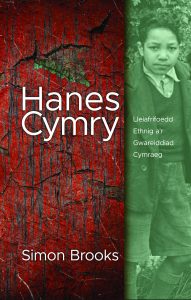
Mae’r gyfrol arloesol hon yn cyflawni dau amcan. Yn gyntaf, mae’n cynnwys, am y tro cyntaf, hanes lleiafrifoedd ethnig oddi mewn i’r diwylliant Cymraeg, a hynny o ddyddiau Macsen Wledig hyd heddiw. Yn ail, mae’n dehongli amlethnigrwydd o safbwynt Cymraeg yn hytrach na Saesneg, sy’n arwain at y cwestiwn, ‘Pwy yw’r Cymry?’
Yn ogystal â’r hanes cyffredinol, ceir penodau am Gymry du, y Sipsiwn Cymreig, Gwyddelod ac Iddewon yng Nghymru, amlethnigrwydd cefn gwlad, a’r Cymry fel lleiafrif ethnig yn Lloegr.
O ran ei syniadaeth, trafodir pethau mor amrywiol â pherthynas y Cymry â threfedigaethedd a chaethwasiaeth, hybridedd grwpiau lleiafrifol, Saeson Cymraeg, a chenedlaetholdeb a hil. Wrth gloi, gofynnir ai’r Cymry yw pobl frodorol Ynys Prydain.

This book reclaims for Wales the history and culture of a music that eventually emerged as jazz in the 1920s, its tendrils and roots extending back to slave songs and abolition campaign songs, and Swansea’s long-forgotten connection with Cincinnati, Ohio. The main themes of the book are to illustrate and emphasise the strong links between emerging African American music in the USA and the development of jazz in mainstream popular culture in Wales; the emancipation and contribution of Welsh women to the music and its social-cultural heritage; and an historical appraisal as the music journeyed towards the Second World War and into living memory. The jazz story is set amid the politics, socio-cultural and feminist history of the time from whence the music emerged – which begs the question ‘When Was Jazz?’ (to echo Gwyn A. Williams in 1985, who asked ‘When Was Wales?’). If jazz is described as ‘the music of protest and rebellion’, then there was certainly plenty going on during the jazz age in Wales.


